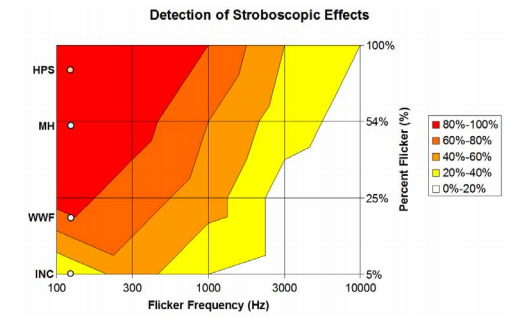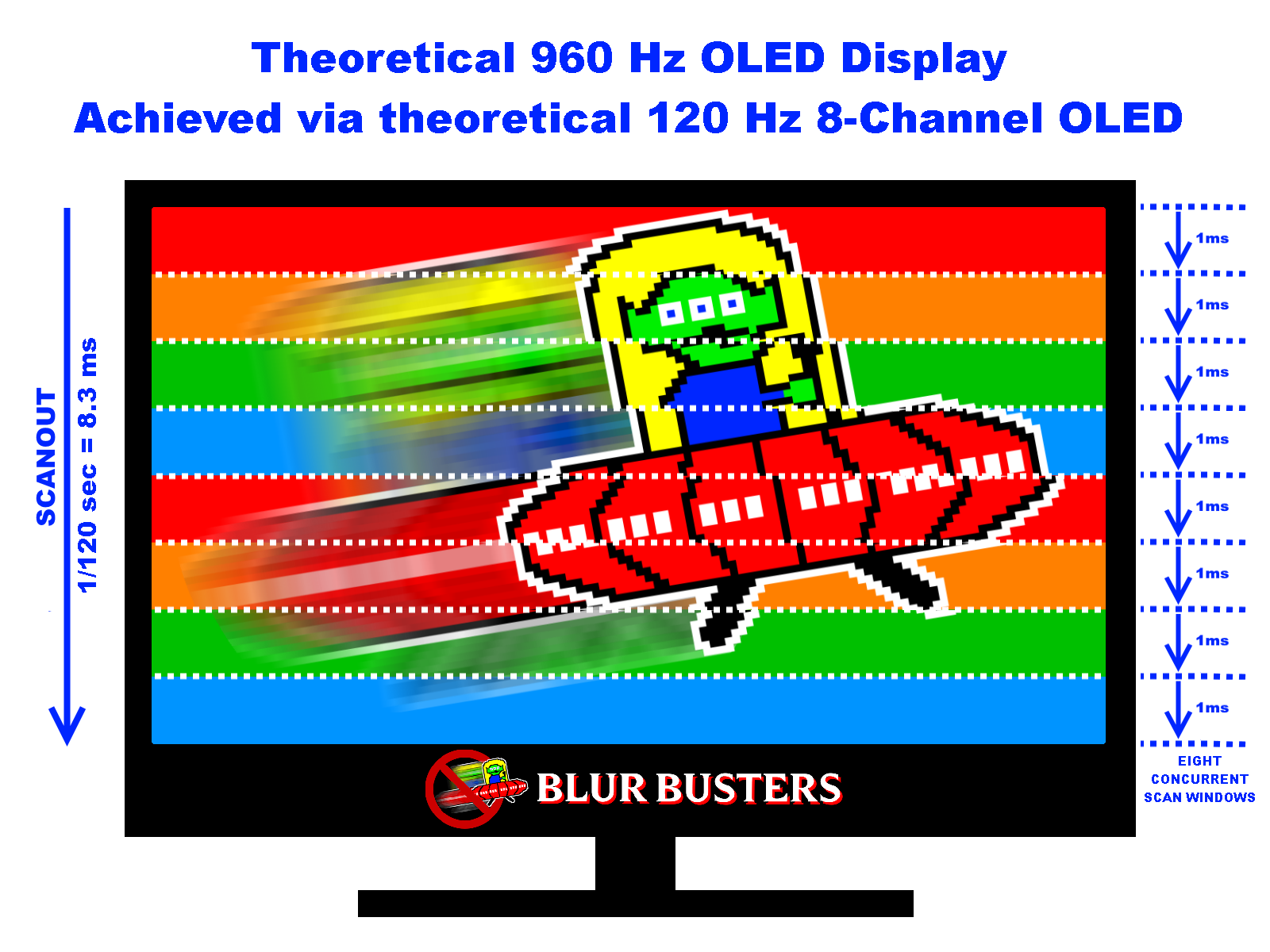NVIDIA Demonstrates Experimental 16,000Hz AR Display
Posted: 14 May 2017, 10:35
Who you gonna call? The Blur Busters! For Everything Better Than 60Hz™
https://forums.blurbusters.com/

That would be my dream display.Chief Blur Buster wrote: It would also completely eliminate mouse dropping effects too -- no matter how fast the mouse cursor moved, it would be a continuous motion blur (cursor position updates every pixel) rather than dotted / phantom array. You'd be able to fixed-gaze (e.g. a crosshairs) and the background would scroll seamlessly like real life -- without stepping effects / phantom array effects -- of a finite Hz.
My favorite multiplayer game was (I stopped playing it) a 2D shooter that I could run at several thousands frames per second.RealNC wrote:I don't think it will help at all. GPUs are not capable of such framerates.
The cool thing about that video though is they are using a 60Hz source and some kind of frame interpolation plus pixel transition offset algorithm to make the motion almost perfectly smooth. That's 1/8th playback speed, so emulating 480Hz. Pretty neat!RealNC wrote:I don't think it will help at all. GPUs are not capable of such framerates.
That's AR (augmented reality). AR is about projecting an image (computer generated) on top of another one (real world.)cskippy wrote:The cool thing about that video though is they are using a 60Hz source and some kind of frame interpolation plus pixel transition offset algorithm to make the motion almost perfectly smooth. That's 1/8th playback speed, so emulating 480Hz. Pretty neat!RealNC wrote:I don't think it will help at all. GPUs are not capable of such framerates.
I would choose 2004 era graphics at ultra high refresh rates over the current situation. At that point I think the bottleneck would be on the CPU side.RealNC wrote:I don't think it will help at all. GPUs are not capable of such framerates.
Unfortunately, even very old games do not run at such frame rates. They utilize only small parts of the GPU (mainly geometry.) So what happens is that the GPU is usually idle.Dew wrote:I would choose 2004 era graphics at ultra high refresh rates over the current situation. At that point I think the bottleneck would be on the CPU side.RealNC wrote:I don't think it will help at all. GPUs are not capable of such framerates.
Now we just need 8-channel 120Hz OLED panels:RealNC wrote:However, 1000Hz, or even 2000Hz is realistic for old games. 16000Hz... eh, not so much. A 1000Hz OLED display is (IMO) what we can realistically dream for.
